Lighting Petals
A Kinetic Eco-Installation Design by Interconenctive Transformable Tensegrity Timber Structureselected exhibition/recognition
- [d]arc Awards: Shortlisted in Art (low budget) categories, UK, 2021

The Petals, design by Interconenctive Transformable Tensegrity Timber Structure, is originally designed for Taiwan Lantern Festival. It detects the informations from environmental temperature, sunlight, and humidity, in order to control shape-changing and embedded lighting doing petal-like performance, create a mutual dialogue between residents and ecological information in public.
The design of this kinetic installation, seeks to combine the sensuousness of nature with the logic of algorithmic geometry and kinetic mechanism. It take a big challenge in both architecture and kinetic art field by using recursive data structure and processes (Hofstadter, 1979)* to generate a kind of modular and lightweight tensegrity structure. It show a novel approach to thinking how to design of tensegrity structure with shape-changing abilities.
*Hofstadter, D. R. (1979). Gödel, Escher, Bach: an eternal golden braid. NY: Basic Books

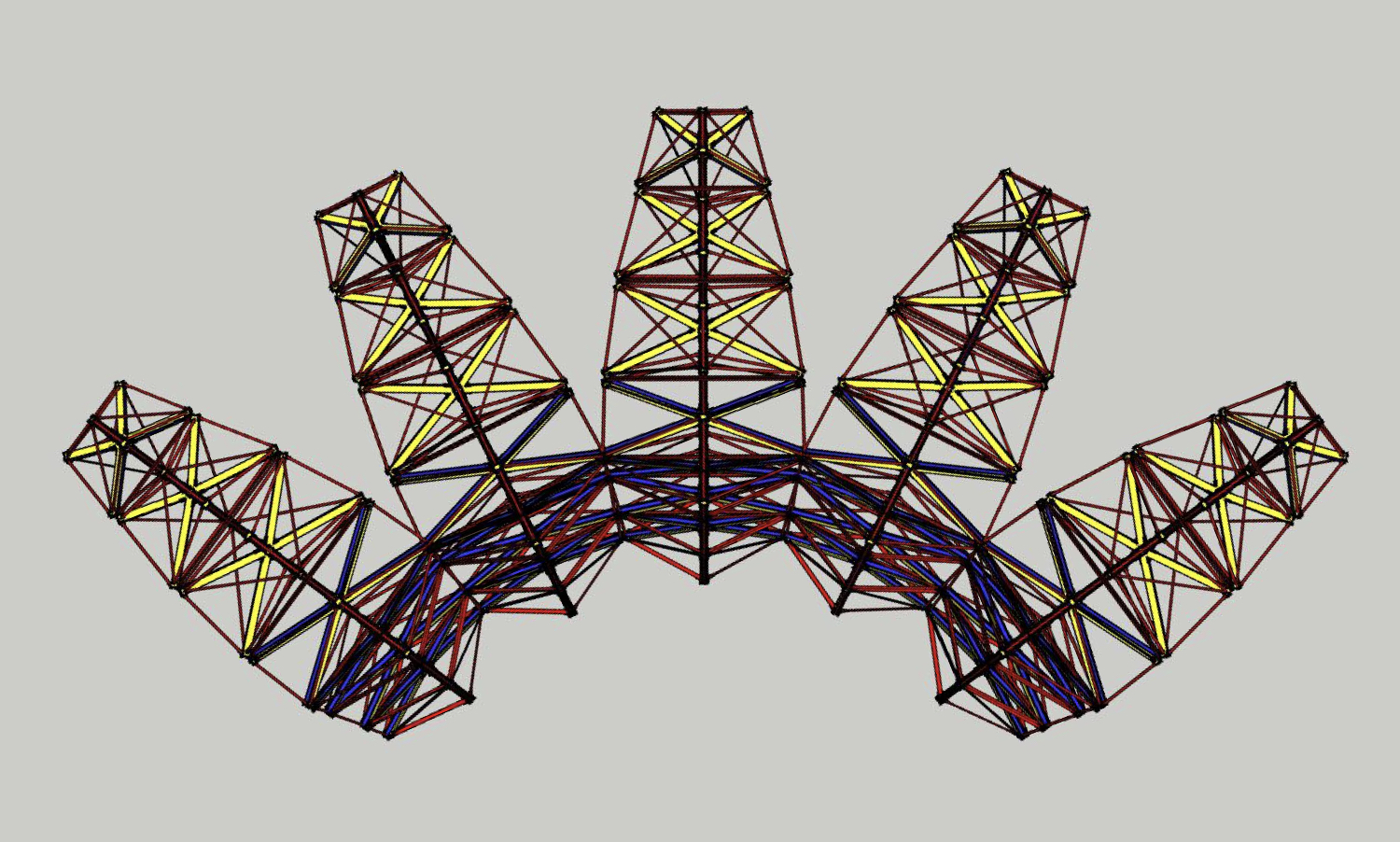

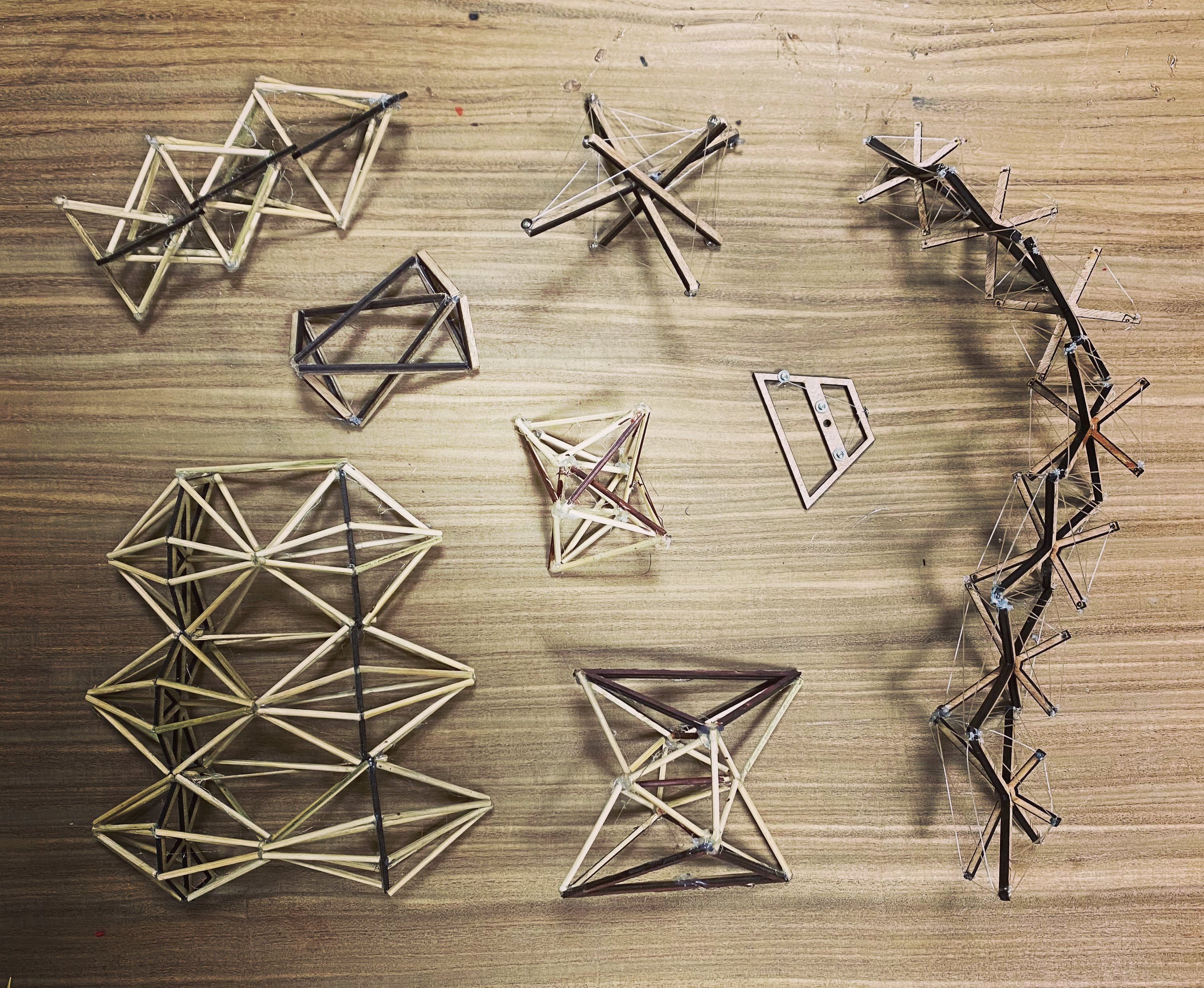
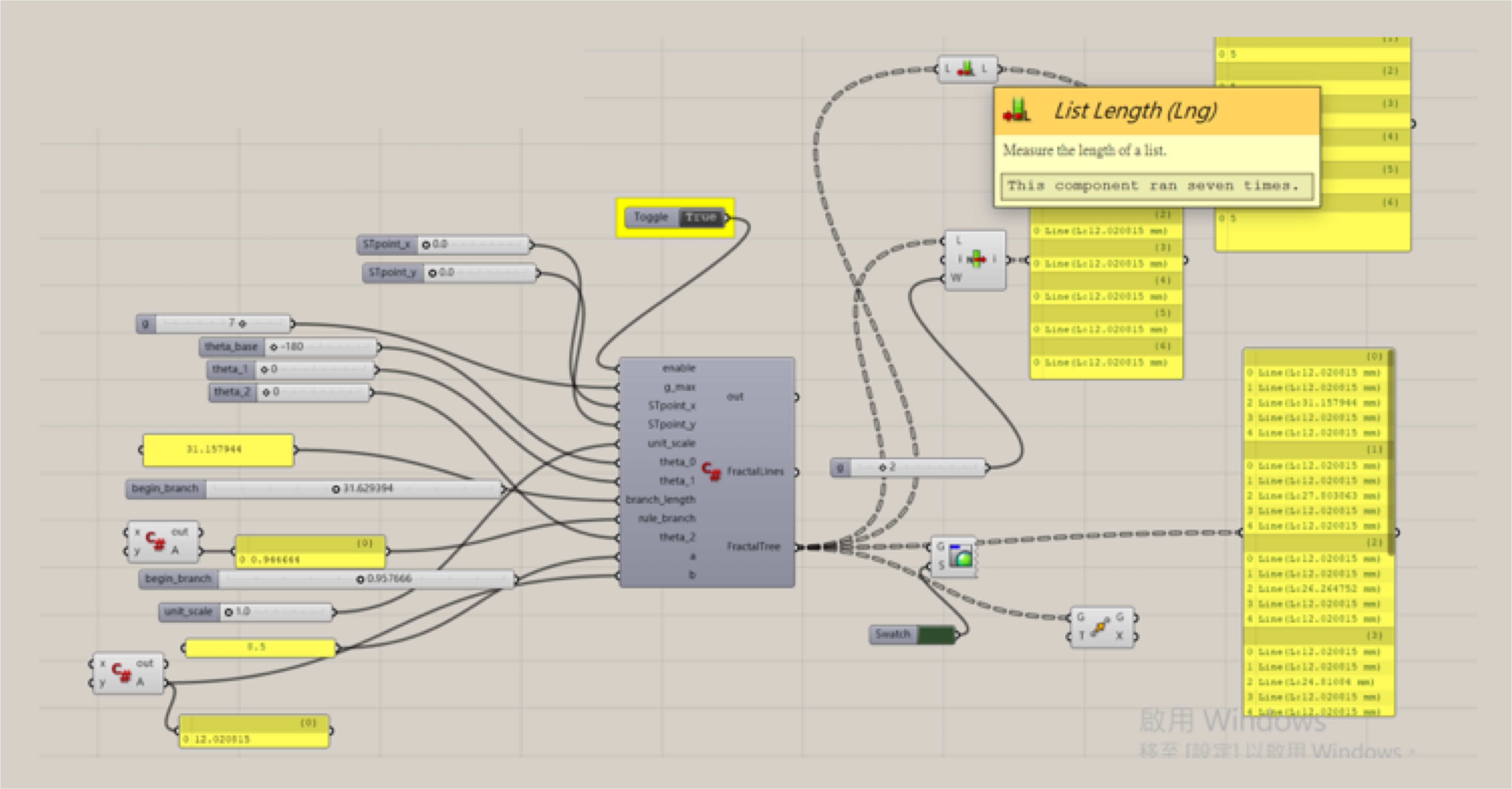


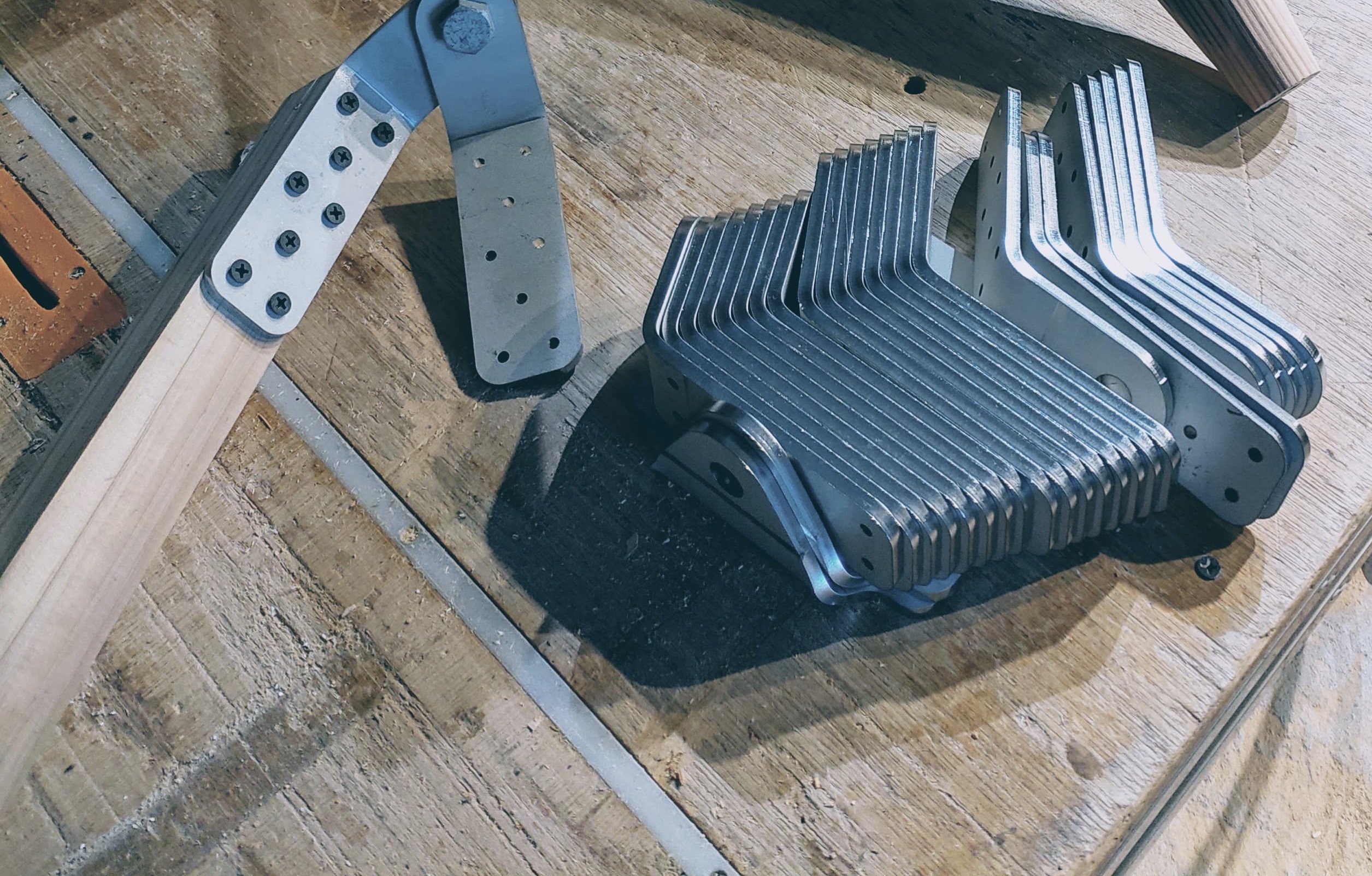
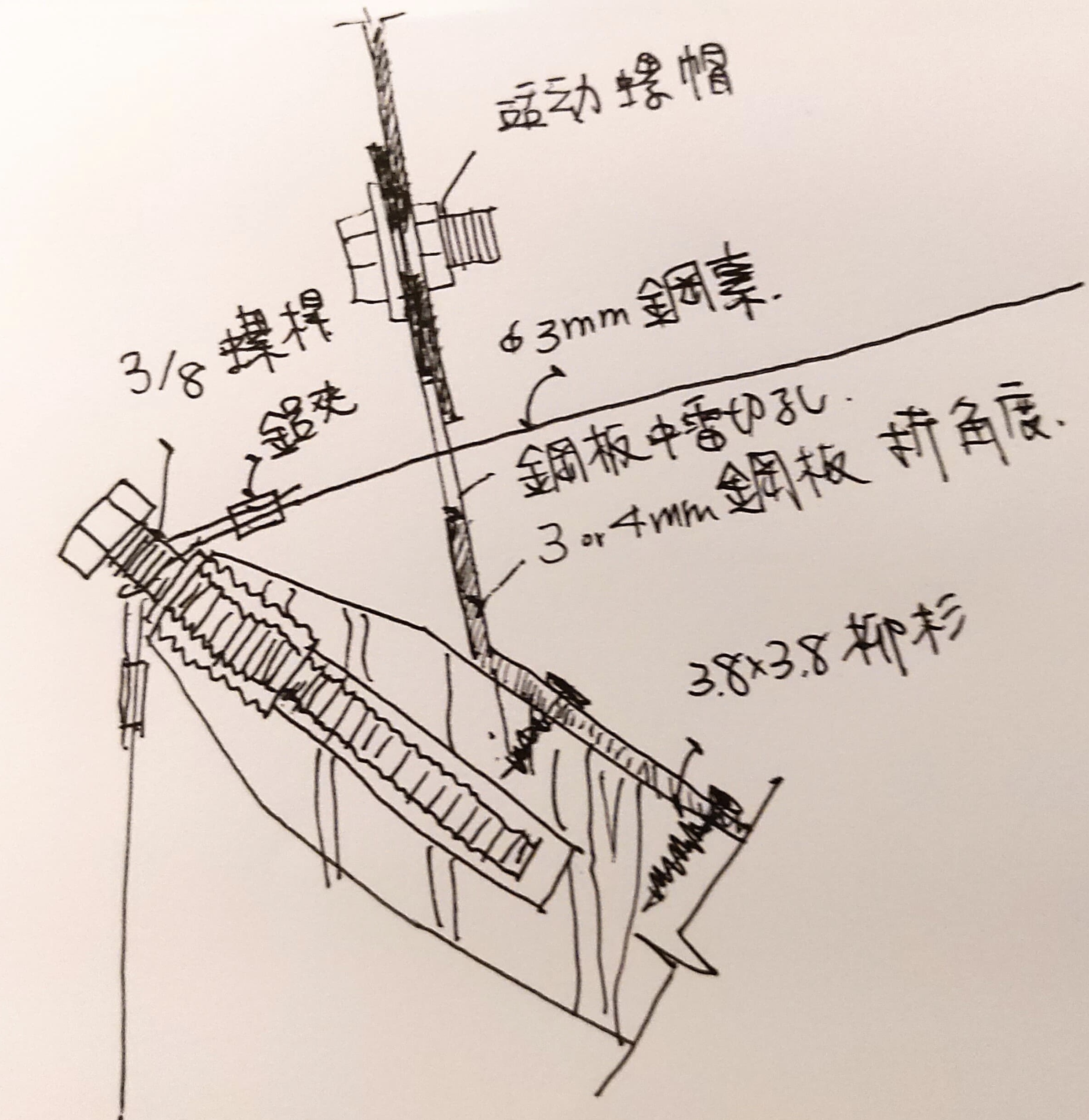


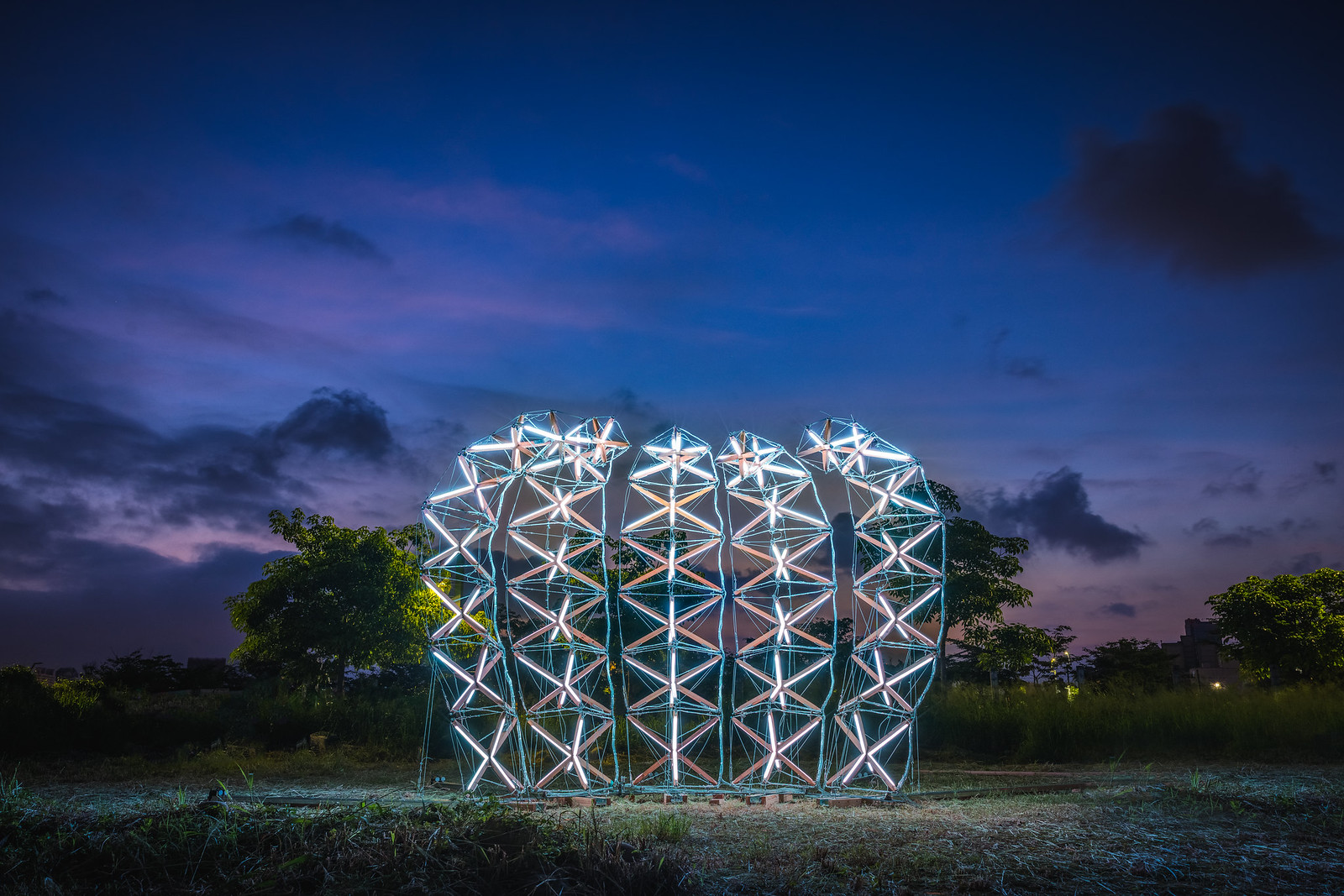




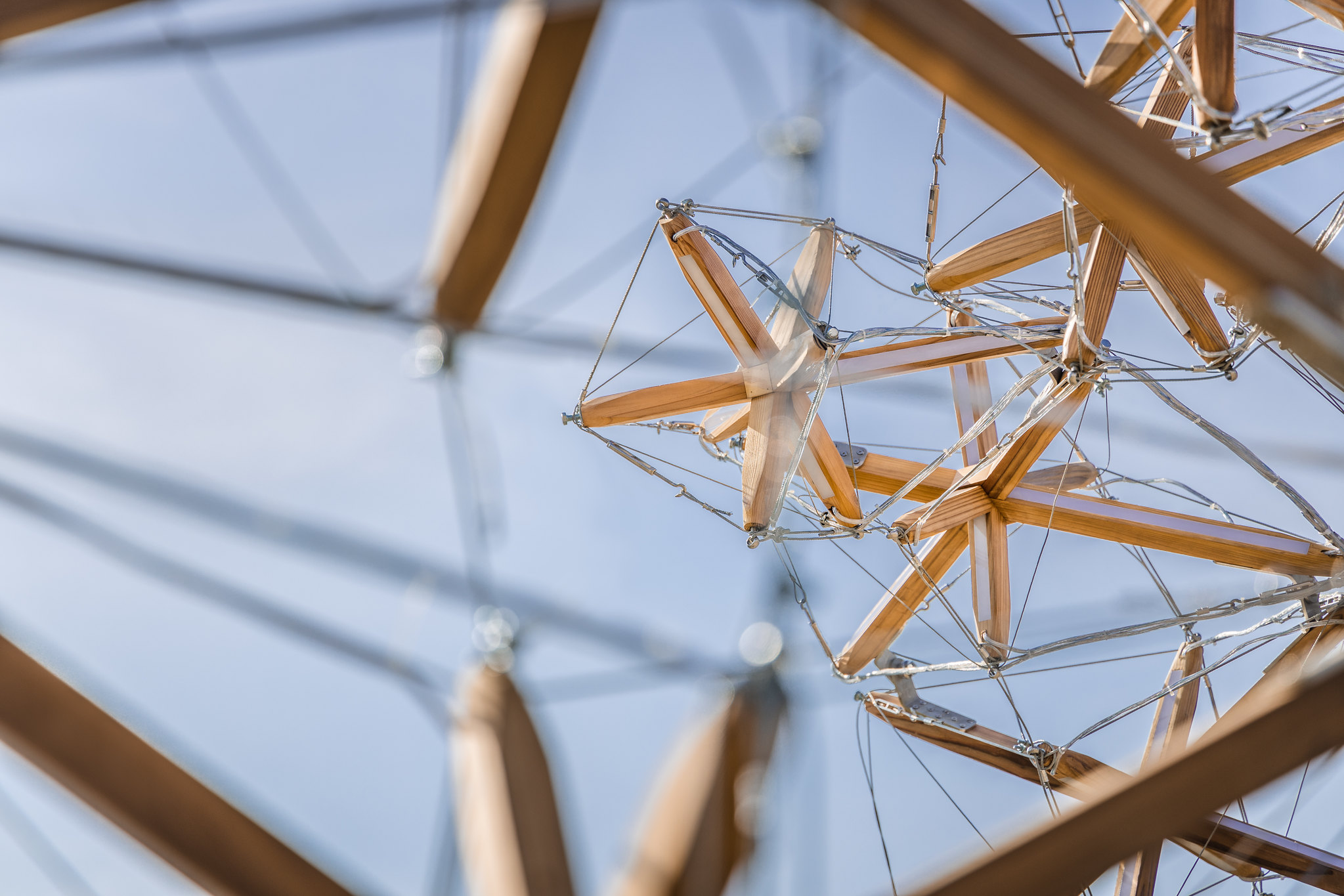

In the specific tensegrity structure, which design utilize the math’s self-similarity from recursion/iteration mechanism for mimic natural growth processes to create growth-like interconnected kinetic structure. We developed customized computational design tools, allowing designers to explore diverse bionic forms by adjusting the parameters of initial branch length, generative value and transform value on joints. The resulting bionic form consists of seven interconnected segments, the transformable joint between each segment functional as a self-actuated mechanical part can fit in all joints between segments in this system. Each bionic form can be seen as one petal, from the many petal-like structures that make up the circular pavilion as a flower. When the transformable joints act as stretch out, the whole structure performs as flower blooms, conversely, it becomes a flower bud when transformable joints act as shrink inward.
Constrcting a large scale kinetic sculpture is usually a difficult task, according to the whole structure must be strong enough but the transformable part need to be flexible and soft but this work demonstrates a very experimental prototype for showing this possibilities on topic of soft architecture. And other, the lighting element perfect embedded in this compression-bearing struts (timber and light) and tension-bearing cables (steel cable and electric wire) separate system (tensegrity), to make this lightweight structure with beautiful embedded lighting.
In this specific tensegrity structure, which design utilize the math’s self-similarity from recursion/iteration mechanism for mimic natural growth processes to create growth-like Interconenctive Transformable Tensegrity Timber Structure. The following document shows the develop processes of the recursion method between projects of MSOrgm, Dandelion, and Petals-ITTTS.
Location/
Hsinchu, Taiwan
Client/
Taiwan Lantern Festival 2021
Artist, Director/
Scottie Chih-Chieh Huang
NTHU BLD/
Deng-Feng Jiang, Xin-Zhi Wu, Hsin-Fu Chen, Zong-Xi Li, Wen-Yu Chen
Manufacture/
Yumu Manufacture & Research
Photo/
FIXER Photographic Studio
Video Record/
Yanmin
Li
---
概要
《動生態裝置》作品透過自行開發的數位設計與製造工具與構築方法(digital design and fabrication),將仿生媒體(biomimetic media)應用於空間框架(space frame)的生成與變形的探索中,發展在視覺藝術(visual art)領域中的運動美學表現、以及電腦輔助建築設計(CAAD)領域上可動結構的變形設計應用。該作品為台灣燈會在新竹委託製作,概念融合新竹在地性的養殖、農業議題,發展將環境資訊視覺化的藝術表現(燈光與形體變化)的機制,以傳達岀人類與自然生態應和平共存的省思。
內容與概念
新竹擁有「台灣矽谷」美名,在高科技產業發達的背後,過去曾造就重金屬排放影響沿海的環境生態的處境。新竹香山的牡蠣養殖產業已經有 100 多年歷史,但牡蠣銅含量卻曾一度高達世界平均值的 40 倍。 牡蠣是海洋中的天然濾水器,可以透過濾食淨化水源,對生態提供極高的生態服務 (Ecosystem Service)價值。反觀人類的建設卻多是對生態帶來危害,而生態失衡的結果也同時影響人類的生存。《動生態裝置》特別以演算法與木構構築技術發展衍生設計系統,使空間裝置呈現仿生性的形體,能透過形狀變形、自體發光的表現回應環境資訊,提醒人類與自然生態達成和平共存的省思。
該作品以數據驅動藝術 (Data-driven Art) 的角度,將生態環境的物理資訊作為感測與重現的對象,透過視覺化 (Visualization) 的表現,使裝置的結構形體產生變形(Shape-changing)和光源表現,藉此讓觀者察覺到周遭可視甚或不可視的物理資訊的變化。該裝置的形體,是一由動態結構系統研發而成的動態建築(Kinetic Architecture),運用電腦圖學領域的仿生運算 (Biologically-inspired Computing),從衍生設計的幾何、參數、連動關係等自我組織的規則制定,使之經過反覆迭代(Iteration)與遞迴(Recursion)的運算,衍生出具有有機體特徵的形體(Organic Form),以此,運用木構造發展具變形機能的建築雕塑。
結構系統研發
《動生態裝置》由五組猶如蕨類一般捲曲形狀的可相互組織的張拉整體結構系統 (Interconenctive Tensegrity Structure System, ITSS) 所構成,透過自我組織 (Self-Assembly) 與遞迴(Recursion)機制研究所發展的演算法,整合運用木構構築發展張拉整體結構 (Tensegrity) 的特性,發展的衍生造形系統,以此發展出仿生生長紋理的運動結構。一般時候,該運動結構會呈現整體向內捲曲的形狀,形成一個具包覆感的涼亭形態。該裝置設定有環境資訊的感測機制(氣溫、土壤濕度、環境噪音、日照等資訊),會依據資訊感測內容,協調控制不同捲曲程度的形體變化,呈現猶如海葵一般的緩慢擺動樣貌。
研發上,透過在Rhino/Grasshopper將自我組織 (self-assembly) 與遞迴(Recursion)機制,開發木構變形結構設計的衍生系統。並從縮尺模型的實驗與測試中,理解變形設計的基本作動原則,並將之整合在衍生設計系統中的規則與參數設定,使得該系統可以自動生成各個元件(節點、可動接頭)的幾何形態,並產生合乎力學與結構限制的造形,該衍生設計機制亦能讓設計者更專注於變形美感與造形的表現下發展設計。
未來發展
發展建築尺度的動力藝術在製作上是具備挑戰的,開發出質量輕巧、又具備強大支撐性能的結構系統成為了唯一解法。而本《動生態裝置》創作正是以正這樣的方向,挑戰建築結構設計、視覺藝術等領域上存在的限制。因此,該創作採用建築發明家巴克敏斯特 · 富勒 (Buckminster Fuller) 提出的張拉整體結構 (Tensegrity) ,並透過運動關節的開發,賦予其可以自主變形的能力。張拉整體系統的發展是以仿生的觀點,觀察人體肌肉與骨骼的組成關係所發展而來。因此,在張力(棍棒型態的材料)與拉力(鋼索)個別作用的結構系統組合中,可以以輕巧的方式,用最少的材料資源,創建最大包覆面積的建築穹頂(Geodesic Dome),爲人類文明帶來創新。
穹頂建築的發生,在人類文明上,總是代表一次次融合科學技術與藝術的革新。公元初期羅馬萬神殿(Pantheum)人類首創用磚塊與混凝土結合的工法蓋出的第一個正圓形穹頂;公元1436年,佛羅倫斯聖母百花聖殿 (Cathedral of Santa Maria del Fiore),建築師菲利波 · 布魯內萊斯基 (Filippo Brunelleschi) 將混凝土做成的穹頂空間,做了視覺藝術表現上最優美的詮釋。《動生態裝置》所在思考的是發展一種新的可模組化交互連接的可變形張拉木構系統。運用當代發達的數位科技與構築技術,開創可以型態變形的穹頂建築。該作品可視為「可動建築穹頂」創作的第一階段,未來將繼續發展利用演算法性能的數位設計工具,兼顧發展仿生有機造形狀、同時有效處理複雜的幾何加工在製程上的運算的方法。承襲建築發明家富勒提出的張拉整體,近一步發展可以自主張拉行變的建築穹頂結構。
All images and videos courtesy Scottie Chih-Chieh Huang and The BioLogicDesign Lab.